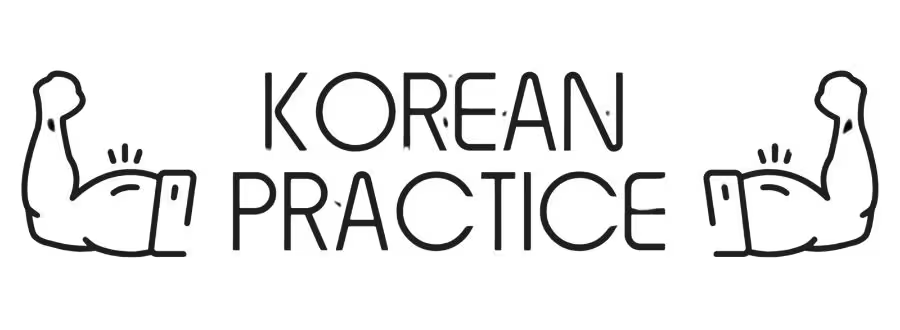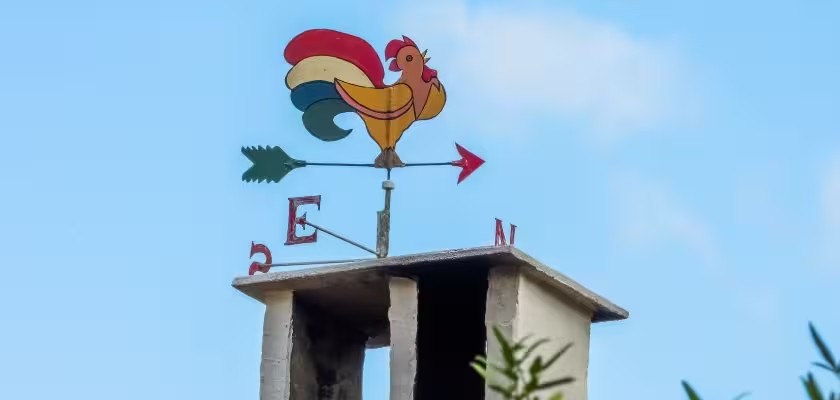Table of Contents
About Cardinal Directions in Korean
Learning cardinal directions in Korean is essential for understanding location, giving directions, and describing places.
In this post, we’ll cover the Korean direction words such as four basic directions, their combined forms, and intercardinal directions with useful examples.
Basic Cardinal Directions
동 (East)
Example: 해는 동쪽에서 뜬다. (The sun rises in the east.)
서 (West)
Example: 해는 서쪽으로 진다. (The sun sets in the west.)
남 (South)
Example: 한국은 북반구에 있고, 필리핀은 남쪽에 있다. (Korea is in the Northern Hemisphere, and the Philippines are in the South.)
북 (North)
Example: 북한은 한국의 북쪽에 위치해 있다. (North Korea is located to the north of South Korea.)
Example 1: Cardinal directions in Korean

Original Korean Sentence
해는 동쪽에서 뜬다.
Pronunciation Guide
해는 (hae-neun) 동쪼게서 (dong-jjo-ge-seo) 뜬다 (ddeun-da).
Meaning and Context
해 (sun) 는 (topic marker) 동쪽 (east) 에서 (from/at) 뜬다 (rises): 뜨다 (to rise) + ㄴ다 (descriptive ending).
Pronunciation Patterns for Conjugations
⊳ 뜨 + ㄴ = 뜬. Rapidly pronouncing ‘뜨’ and ‘ㄴ’ results in ‘뜬’.
Grammar
* 에서: Indicates the place where an action originates or happens.
Culture
In Korean culture, observing the sunrise (해돋이 – haedoji) on New Year’s Day is a popular tradition, symbolizing new beginnings and good fortune.
English Translation
The sun rises in the east.
Literal Translation
Sun rise in east.
Combined Directions
동쪽 (East): Same as “동” but more explicitly means “east side” or “east direction.”
Example: 우리 집은 동쪽에 창문이 많아요. (My house has many windows on the east side.)
서쪽 (West): Same as “서” but more explicitly means “west side” or “west direction.”
Example: 서쪽 하늘이 붉게 물들었다. (The western sky was dyed red.)
남쪽 (South): Same as “남” but more explicitly means “south side” or “south direction.”
Example: 남쪽으로 여행을 가고 싶어요. (I want to travel to the south.)
북쪽 (North): Same as “북” but more explicitly means “north side” or “north direction.”
Example: 북쪽에서 바람이 불어온다. (The wind is blowing from the north.)
Example 2: Cardinal directions in Korean
Original Korean Sentence
남쪽으로 여행을 가고 싶어요.
Pronunciation Guide
남쪼그로 (nam-jjo-geu-ro) 여행을 (yeo-haeng-eul) 가고 (ga-go) 시퍼요 (si-peo-yo).
Meaning and Context
남쪽 (south) 으로 (to; direction marker) 여행 (travel) 을 (object particle) 가다 (to go) 고 싶다 (want to) 어요 (I’m telling you polite and friendly).
Culture
South Korea has distinct regional cultures and dialects. Traveling to the southern regions of Korea offers unique experiences like trying different local cuisine.
English Translation
I want to travel to the south.
Literal Translation
Want to go travel to south.

Want to learn Korean in a simple and structured way, just like this? My courses break down grammar step by step, making Korean easy to understand. Plus, you can try free sample lessons. Ready to start?
Intercardinal Directions
동남 (Southeast)
Example: 동남아시아는 날씨가 덥다. (Southeast Asia has hot weather.)
남서 (Southwest)
Example: 이번 태풍은 남서쪽에서 올라오고 있다. (This typhoon is coming up from the southwest.)
북동 (Northeast)
Example: 북동쪽 지역에 눈이 많이 내렸다. (A lot of snow fell in the northeastern region.)
북서 (Northwest)
Example: 북서풍이 불고 있어서 춥다. (It’s cold because the northwest wind is blowing.)
Example 3: Cardinal directions in Korean
Original Korean Sentence
북동쪽 지역에 눈이 많이 내렸다.
Pronunciation Guide
북똥쪽 (buk-ddong-jjok) 지여게 (ji-yeo-ge) 누니 (nu-ni) 마니 (ma-ni) 내렷따 (nae-ryeot-dda).
Meaning and Context
북동쪽 (northeast) 지역 (region/area) 에 (in/at; location marker) 눈 (snow) 이 (subject marker) 많이 (a lot) 내리다 (to fall) + 었 (past tense) 다 (descriptive ending).
Pronunciation Patterns for Conjugations
⊳ 리 + 었 = 렸. Rapidly pronouncing ‘리’ and ‘었’ results in ‘렸’.
Culture
The northeastern regions of Korea, particularly Gangwon-do, are known for their beautiful snowy landscapes during winter, making them popular destinations for winter sports and activities.
English Translation
It snowed a lot in the northeastern region.
Literal Translation
Snow fell a lot in northeastern region.
Combined Intercardinal Directions
동남쪽 (Southeast): More explicitly “southeast side” or “southeast direction.”
남서쪽 (Southwest): More explicitly “southwest side” or “southwest direction.”
북동쪽 (Northeast): More explicitly “northeast side” or “northeast direction.”
북서쪽 (Northwest): More explicitly “northwest side” or “northwest direction.”
Other Related Words and Phrases
방향 (banghyang): Direction
쪽 (jjok): Side/Direction (used as a suffix)
How to Use Cardinal Directions in Korean
Basic Directions (동, 서, 남, 북): These are simple and often used in formal contexts or in compound words like 동남아시아 (Southeast Asia).
Adding “쪽”: Makes directions more specific, like east side (동쪽) or north side (북쪽). This is more common when describing location.
Intercardinal Directions: Combining two directions to specify regions like Southeast (동남) or Northwest (북서).
Using “에” and “으로”:
“에” indicates location: 동쪽에 (at the east side).
“으로” indicates movement: 남쪽으로 (toward the south).
The best way to master these Korean location vocabulary is through practice and exposure. Pay attention to how native speakers use them in everyday conversation!
Conclusion:
Learning the cardinal directions in Korean – 동, 서, 남, 북, and their variations – is a fundamental step in your Korean language journey. By understanding these cardinal directions in Korean and how they are used with “쪽” and particles like “에” and “으로,” you’ll be able to confidently navigate conversations about location, geography, and giving directions.
Don’t be afraid to practice these Korean direction words in everyday situations. Try describing the location of objects in your room, or map out a route using Korean directions. The more you use them, the more natural they will become! Keep exploring and expanding your Korean vocabulary – 화이팅! (Fighting!)
Sign up for my newsletter and get
📖 Korean short stories
🎧 Listening practice with audio
❓ Vocabulary and grammar quizzes
🎁 Free courses
📝 Blog updates
– all delivered straight to your inbox!








